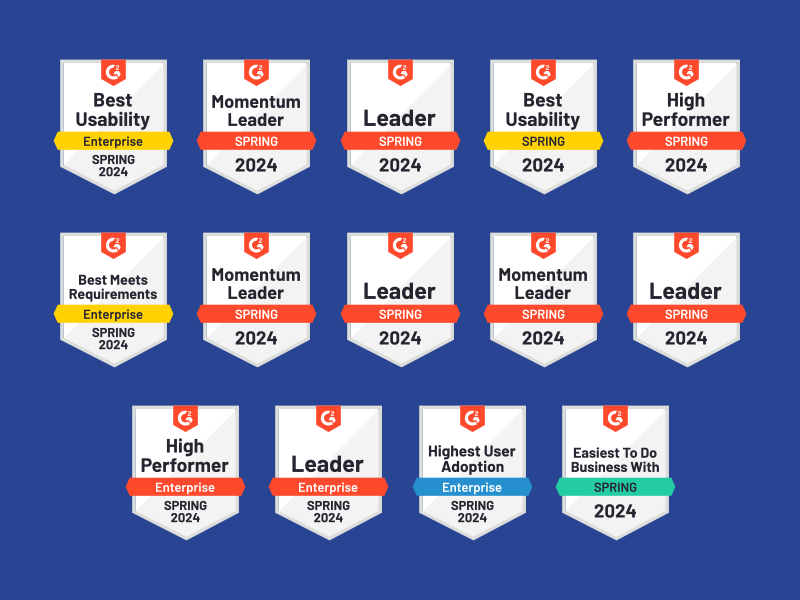In this year’s HR Acuity Sixth Annual Employee Relations Benchmark Study, investigation processes remained flat. Only 43% of organizations are using required investigation processes, and two-thirds of organizations (65%) have no formal investigator training or only train as needed. Adding vulnerability, 53% of organizations are still using documentation methods that compromise security, weaken accuracy and provide minimal reporting capabilities. These are numbers we must improve. The frequency of investigations isn’t trending down and neither are the financial settlements associated with them.
How we run investigations dictates a lot about how ER is perceived in
Consider embedding these five investigation best practices into your process:
1. Nail the first impression.
The secret to never making a bad first impression for investigations? Build a consistent process for timely, well-crafted responses. Coming forward with a complaint can be overwhelming and scary for an employee. How your team formally responds to their initial complaint goes a long way to reduce anxiety and reassure them that your process is trustworthy and comprehensive. It’s a critical first impression that influences how they experience the rest of your process. Make sure your process produces a timely, respectful response, validating that their allegation has been received and explaining what they can expect to happen next. Finally, make sure your process has communications mechanisms ready to respond within 24 hours for non-emergencies and immediately for allegations that threaten physical danger.
2. Communication consistency.
If you’re striving for a respectful, fair process that scales, you can’t ignore communication. Words matter, and consistent language is a must. When communication style and workflow are mapped in advance, you have a better chance of the process repeatedly meeting your high standards, no matter where an employee is and no matter what team is assembled.
Mapping communication style includes making sure you standardize language to describe the person making the allegation. Are they a complainant, respondent, subject, person of interest, or something else? Are you conducting an investigation or an inquiry? While there are wide opinions on preferred word choice — for example, we’re not big fans of the word “accused” — consistency across the organization is key. This consistency would also hold true in your documentation language.
Mapping communication workflows includes answering questions such as who should be notified, how and when they should be notified and, of course, by whom. Answering these questions in advance ensures there is no confusion when it’s time to move.
3. Documentation
When an investigation outcome lands your organization in court, it’s too late to think about documentation. From the moment an investigation starts, it’s important to capture and document the right facts in a consistent, compliant, secure format. While some fact-finding is obvious, such as the details surrounding the complaint, details that feel inconsequential in the moment can prove important later on.
Best practices include standardizing how you capture and store dynamic facts that often change, such as job titles, job locations, team members and direct managers. Quickly preserving this data in your tracking management solution helps avoid inadvertently deleting or losing evidence. By the way, sometimes this evidence needs to be pulled from other platforms, so establishing a relationship with busy IT and security teams in advance is a smart move. When you meet with them, have answers ready for questions like: when can employee emails be pulled? What other platform communications should be captured (e.g., IM systems or Slack)? Who is allowed to request video if there is one? Are there company-issued cell phones that should be reviewed? Can I pull text messages? You get the point.
4. Check-ins and aftercare for everyone.
In leading-edge ER functions, aftercare goes beyond risk mitigation to avoid retaliation. Instead, it’s treated as importantly as the investigation itself and it touches everyone impacted by the circumstances — whether the allegation was substantiated or not. After all, every person involved feels an impact and walks away with their own unique perception of the process and experience — aftercare is that critical moment that you make or break trust in the layers of people around the issue. Best practices include checking in with everyone one month post close and then at regular intervals every few months. They include training or other programs to openly address workplace concerns. They include documenting the initiatives. Finally, they include forecasting resources so that when you commit to following-through, you keep your promises.
5. Sharing outcomes & monitoring feedback.
We know that running tight, transparent investigations is the way we build trust with employees. Unfortunately, our efforts to stay transparent during the process are quickly undermined when we fail to share outcomes data with employees. Sadly, that’s exactly what is happening, much too frequently. The percentage of organizations that share aggregated, anonymous ER data with employees dropped from 29% pre-COVID to 17%. Of those that do share this data, only half share it once a year.
Leading ER teams aren’t afraid to share outcomes. In fact, they not only share data, they proactively ask for feedback about how they’re doing — and then report that too. When ER teams take the time to reveal how the organization is performing on issues such as workplace harassment and pay equity, they send a powerful signal that employee issues are taken seriously and progress in the right direction is happening.
As we continue operating in a world full of “uncontrollables,” one thing we can control is how we run our investigations. Take a minute and evaluate your processes against these five best practices; are you building trust every step of the way? Building employee trust is one of the most valuable things we can do for our organizations right now and investigations present the perfect opportunity for us to do just that.



